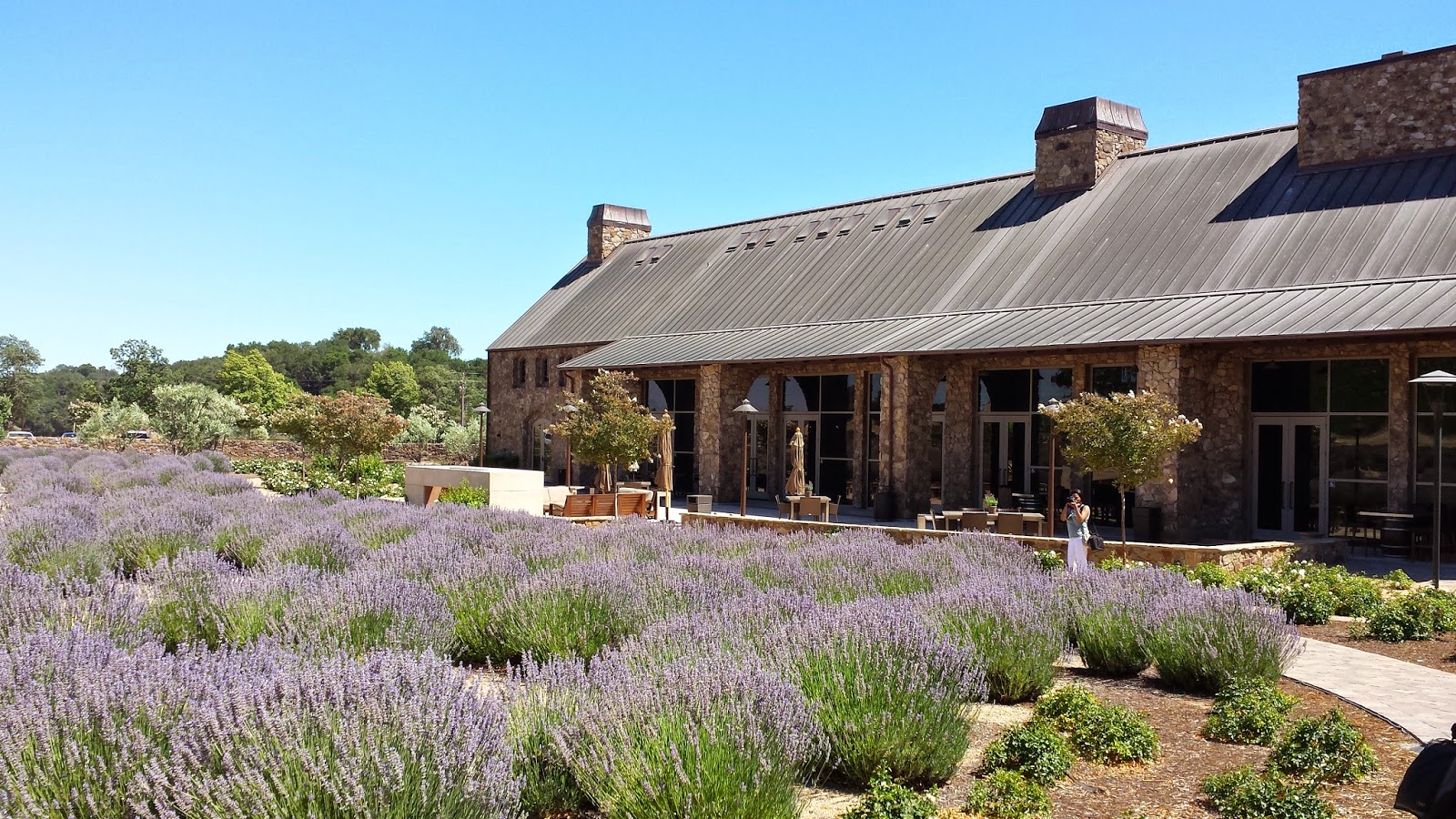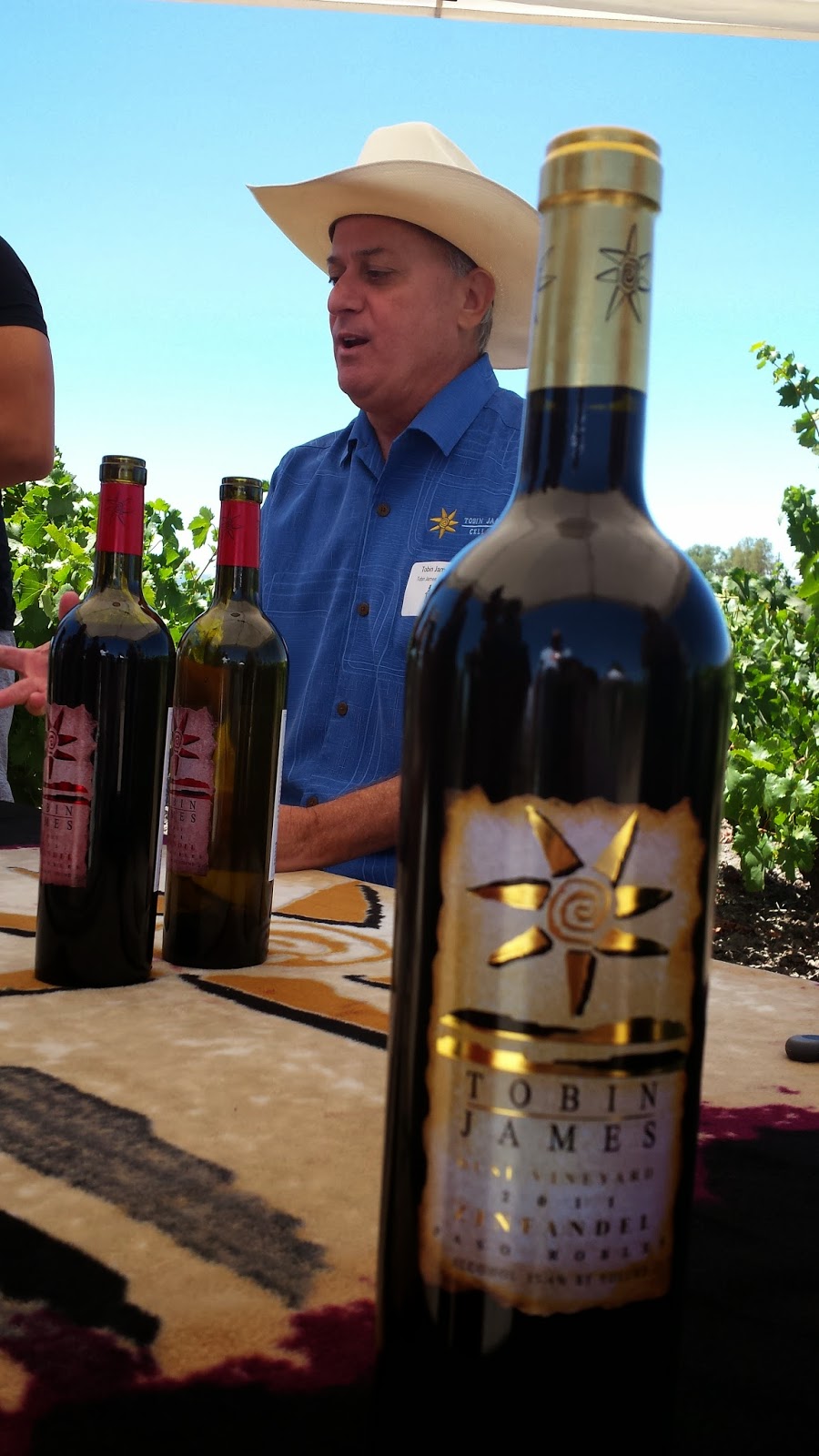 From numerous trips to Greenwood Lake, I've become very familiar with two Hudson Valley cider makers, Warwick Valley Winery & Distillery & Applewood Winery. The former produces apple and pear ciders under the Doc’s Draft Ciders brand, while the latter recently introduced their Naked Flock ciders which replaced their Apple Dave's Stone Fence Cider. TasteCamp presented a few opportunities to expand my Hudson Valley cider experience -- starting with a trade tasting at Robibero Family Vineyards.
From numerous trips to Greenwood Lake, I've become very familiar with two Hudson Valley cider makers, Warwick Valley Winery & Distillery & Applewood Winery. The former produces apple and pear ciders under the Doc’s Draft Ciders brand, while the latter recently introduced their Naked Flock ciders which replaced their Apple Dave's Stone Fence Cider. TasteCamp presented a few opportunities to expand my Hudson Valley cider experience -- starting with a trade tasting at Robibero Family Vineyards.

 Among the various wineries at Robibero, Bad Seed Cider Company was pouring their inaugural release: Dry Hard Cider (6.3% abv, $12). The ciderie is co-owned by Devin Britton and Albert Wilklow, a 6th generation apple farmer. Devon is the cider maker - having a history of fermenting anything that would make a tasty beverage. Their Dry Hard Cider was clean, tart, and refreshing and hearing that they produced other styles incited me to visit on Sunday. The taproom was only a week old, yet there was already a decent crowd on my arrival. Devin was pouring four Bad Seed ciders as well as guest ciders from other Hudson Valley producers. I stuck with a sampler of his Dry, Cherried Away, Mapled Monk, and Blueberry. The Cherried Away was easily my favorite, basically the Dry fermented with tart sour cherries. This is one tasty cider. It took a few sips to start to appreciate the Mapled Monk, which is their Belgian Abbey augmented with a touch of maple syrup. There's a bit of funk from being unfiltered and inoculation with Belgian abbey beer yeast. Very interesting. Expect a lot more of these artisan ciders - I hear there's a bourbon-maple combo on the horizon.
Among the various wineries at Robibero, Bad Seed Cider Company was pouring their inaugural release: Dry Hard Cider (6.3% abv, $12). The ciderie is co-owned by Devin Britton and Albert Wilklow, a 6th generation apple farmer. Devon is the cider maker - having a history of fermenting anything that would make a tasty beverage. Their Dry Hard Cider was clean, tart, and refreshing and hearing that they produced other styles incited me to visit on Sunday. The taproom was only a week old, yet there was already a decent crowd on my arrival. Devin was pouring four Bad Seed ciders as well as guest ciders from other Hudson Valley producers. I stuck with a sampler of his Dry, Cherried Away, Mapled Monk, and Blueberry. The Cherried Away was easily my favorite, basically the Dry fermented with tart sour cherries. This is one tasty cider. It took a few sips to start to appreciate the Mapled Monk, which is their Belgian Abbey augmented with a touch of maple syrup. There's a bit of funk from being unfiltered and inoculation with Belgian abbey beer yeast. Very interesting. Expect a lot more of these artisan ciders - I hear there's a bourbon-maple combo on the horizon.During day 2, our host, Carlo Devito, sponsored another Hudson Valley tasting at his Hudson-Chatham Winery. Among the participants were several cideries including the above mentioned Doc's Draft and Naked Flock. Our host poured an almost cider - the Old Orchard Sparkling Apple Wine which resembled a sparkling cider (clean, effervescent, with a nice tart finish), but it came in at 10.7% abv - too high to be labeled a cider.
 Another participant was Orchard Hill Cider Mill, from New Hampton and using fruit from Soons Orchard. They produce still and sparkling cider, the latter using méthode champenoise, whereas both styles are bottle fermented and unfiltered. Their traditional Red and Gold labels (still vs sparkling) are clean and dry with the Red Label (7.25% abv, $10) having some toasted apple elements. The Gold Label (8% abv, $18) is slightly sweeter and lighter. Orchard Hill also introduced us to their Ten66 brand - the Jerry Lee Lewis of ciders - the killer. Named for the year of the Normandy invasion of Britain and inspired by that region's Pommeau de Normandi, both the Red and Gold labels are delicious. The Red Label (20% abv, $30 375 ml) is mixed with apple brandy distilled from Soons Orchard apples and aged in French oak wine barrels. The aged brandy is then blended with fresh unfermented Soons' cider and returned to the barrel for extra aging. The result is a tart apple pie flavor with vanilla and nutmeg on the tail. The Ten66 Golden Barrel (20% abv, $30 375 ml) is even better, brandy distilled in 2005 combined with fresh juice and barreled in 2009 - a single barrel mistelle. Not a cider, but one of the best ciderie beverages on the market.
Another participant was Orchard Hill Cider Mill, from New Hampton and using fruit from Soons Orchard. They produce still and sparkling cider, the latter using méthode champenoise, whereas both styles are bottle fermented and unfiltered. Their traditional Red and Gold labels (still vs sparkling) are clean and dry with the Red Label (7.25% abv, $10) having some toasted apple elements. The Gold Label (8% abv, $18) is slightly sweeter and lighter. Orchard Hill also introduced us to their Ten66 brand - the Jerry Lee Lewis of ciders - the killer. Named for the year of the Normandy invasion of Britain and inspired by that region's Pommeau de Normandi, both the Red and Gold labels are delicious. The Red Label (20% abv, $30 375 ml) is mixed with apple brandy distilled from Soons Orchard apples and aged in French oak wine barrels. The aged brandy is then blended with fresh unfermented Soons' cider and returned to the barrel for extra aging. The result is a tart apple pie flavor with vanilla and nutmeg on the tail. The Ten66 Golden Barrel (20% abv, $30 375 ml) is even better, brandy distilled in 2005 combined with fresh juice and barreled in 2009 - a single barrel mistelle. Not a cider, but one of the best ciderie beverages on the market. One of the most interesting collection of ciders the entire weekend was poured by Aaron Burr Cidery. These were apple and pear ciders from uncultivated fruit - foraged from wild or abandoned orchards in the Catskills. The apples and pears are small and mangled - providing more skin contact in relation to juice. The Homestead Ciders are fermented using native yeast and unfiltered to create a cider style that was consumed when the country was founded. Obviously these are very small productions, maybe 100 cases, and extremely unique and tasty. Aaron Burr also produces an Appinette (8.4% abv) cider using 30% Finger Lakes Traminette grapes and 70% Orange County (NY) apples. It comes off dry, effervescent, with a tart - slightly bitter finish. Cheers for pulling these off; Aaron Burr ciders are highly recommended.
There are more cideries in the Hudson Valley waiting for my next trip. Hope to visit or taste Kettleborough Cider House, Annadale Cidery, Slyboro Cider House, and Breezy Hill Orchard & Cider Mill soon. Cheers.




























































